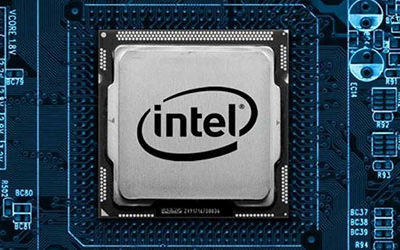%
Jubak’s Picks Performance 1997-2019
Jubak’s Picks
Buy and hold? Not really.
Short-term trading?
Not by a long shot.
So what is the stock-picking style of The Jubak’s Picks portfolio?
Click to expand...
Click to View the Jubak’s Picks Portfolio
I try to go with the market’s momentum when the trend is strong and the risk isn’t too high, and I go against the herd when the bulls have turned piggy and the bears have lost all perspective. What are the results of this moderately active — the holding period is 12 to 18 months — all-stock portfolio since inception in May 1997? A total return of 584% as of December 31, 2019. That compares to a total return on the S&P 500 stock index of 335% during the same period.
%
Top 50 Stocks Performance 2019
Top 50 Stocks
This long-term, buy-and-holdish portfolio was originally based on my 2008 book The Jubak Picks.
Trends that are strong enough, global enough, and long-lasting enough to surpass stock market averages.
Click to expand...
Click to view the Top 50 Stocks Portfolio
In The Jubak’s Picks Portfolio I identified ten trends that were strong enough, global enough, and long-lasting enough to give anyone who invested in them a good chance of beating the stock market averages.
To mark the publication of my new book on volatility, Juggling with Knives, and to bring the existing long-term picks portfolio into line with what I learned in writing that book and my best new ideas on how to invest for the long-term in a period of high volatility, I’m completely overhauling the existing Top 50 Picks portfolio.
You can buy Juggling with Knives at bit.ly/jugglingwithknives
%
Dividend Income Performance 2021
Dividend Income
Every income investor needs a healthy dose of dividend stocks.
Why bother?
Why not just concentrate on bonds or CDs?
Click to expand...
Click to view the Dividend Income Portfolio
Because all the different income-producing assets available to income investors have characteristics that make them suited to one market and not another. You need all of these types of assets if you’re going to generate maximum income with minimum risk as the market twists and turns.
For example: bonds are great when interest rates are falling. Buy early in that kind of market and you can just sit back and collect that initial high yield as well as the capital gains that are generated as the bonds appreciate in price with each drop in interest rates.
CDs, on the other hand, are a great way to lock in a yield with almost absolute safety when you’d like to avoid the risk of having to reinvest in an uncertain market or when interest rates are crashing.
Dividend stocks have one very special characteristic that sets them apart from bonds and CDs: companies raise dividends over time. Some companies raise them significantly from one quarter or year to the next. That makes a dividend-paying stock one of the best sources of income when interest rates start to rise.
Bonds will get killed in that environment because bond prices will fall so that yields on existing bonds keep pace with rising interest rates.
But because interest rates usually go up during periods when the economy is cooking, there’s a very good chance that the company you own will be seeing rising profits. And that it will raise its dividend payout to share some of that with shareholders.
With a dividend stock you’ve got a chance that the yield you’re collecting will keep up with rising market interest rates.
But wouldn’t ya know it?
Just when dividend investing is getting to be more important—becoming in my opinion the key stock market strategy for the current market environment—it’s also getting to be more difficult to execute with shifting tax rates and special dividends distorting the reported yield on many stocks.
I think there’s really only one real choice—investors have to pull up their socks and work even harder at their dividend investing strategy. That’s why I revamped the format of the Dividend Income portfolio that I’ve been running since October 2009. The changes aren’t to the basic strategy. That’s worked well, I think, and I’ll give you some numbers later on so you can judge for yourself. No, the changes are designed to do two things: First, to let you and me track the performance of the portfolio more comprehensively and more easily compare it to the performance turned in by other strategies, and second, to generate a bigger and more frequent roster of dividend picks so that readers, especially readers who suddenly have a need to put more money to work in a dividend strategy, have more dividend choices to work with.
Why is dividend investing so important in this environment? I’ve laid out the reasons elsewhere but let me recapitulate here. Volatility will create repeated opportunities to capture yields of 5%–the “new normal” and “paranormal” target rate of return–or more as stock prices fall in the latest panic. By using that 5% dividend yield as a target for buys (and sells) dividend investors will avoid the worst of buying high (yields won’t justify the buy) and selling low (yields will argue that this is a time to buy.) And unlike bond payouts, which are fixed by coupon, stock dividends can rise with time, giving investors some protection against inflation.
The challenge in dividend investing during this period is using dividend yield as a guide to buying and selling without becoming totally and exclusively focused on yield. What continues to matter most is total return. A 5% yield can get wiped out very easily by a relatively small drop in share price.
Going forward, I will continue to report on the cash thrown off by the portfolio—since I recognize that many investors are looking for ways to increase their current cash incomes. But I’m also going to report the total return on the portfolio—so you can compare this performance to other alternatives—and I’m going to assume that an investor will reinvest the cash from these dividend stocks back into other dividend stocks. That will give the portfolio—and investors who follow it—the advantage of compounding over time, one of the biggest strengths in any dividend income strategy.
What are some of the numbers on this portfolio? $29,477 in dividends received from October 2009 through December 31, 2013. On the original $100,000 investment in October 2009 that comes to a 29.5% payout on that initial investment over a period of 39 months. That’s a compound annual growth rate of 8.27%.
And since we care about total return, how about capital gains or losses from the portfolio? The total equity price value of the portfolio came to $119,958 on December 31, 2012. That’s a gain of $19,958 over 39 months on that initial $100,000 investment or a compound annual growth rate of 5.76%.
The total return on the portfolio for that period comes to $49,435 or a compound annual growth rate of 13.2%.
How does that compare to the total return on the Standard & Poor’s 500 Stock Index for that 39-month period? In that period $100,000 invested in the S&P 500 would have grown to $141,468 with price appreciation and dividends included.) That’s a total compounded annual rate of return of 11.26%.
That’s an annual 2 percentage point advantage to my Dividend Income portfolio. That’s significant, I’d argue, in the context of a low risk strategy.
Portfolio Related Posts
Selling ConocoPhillips on increased Russian oil refinery production
I’m holding onto oil stocks that pay big dividends such as Pioneer Natural Resources (PXD), at 11.22%, and Devon Energy (DVN), at 9.06%, but I lightening up on my oil exposure by selling ConocoPhillips (COP) out of my Jubak Picks Portfolio. The stock pays a dividend of just 2.29%.
My 10 stocks for a core portfolio–you’ll have to sign up as a member (it’s free) to read the post with all the “why’s” in the Jim’s Extra section of this site
I think a well-constructed portfolio should resemble an onion. (Yes, to continue the analogy, it may make you cry in the short term, but the end result after cooking time is yummy.) At the center of that onion is a core built of stocks with extremely high, risk-adjusted potential rates of return. These stocks won’t deliver the kind of huge gains you can reap from investing in a risky bet–if everything turns out right for that company and its stock. But neither are they likely to crash and burn because something goes wrong at the company. These core portfolio stocks will drop if the market as a whole heads south, but they will drop less and recover faster. These aren’t buy-and-forget, or hold-forever stocks. They can soar to unreasonable valuations at times and an active investor should take profits at some point of overvaluation. (I did a YouTube video recently (you can find it on any of my sites) on when to sell a very overvalued Nvidia, for example.) And they can trade at big discounts to fair value (which is, of course, when the steely-eyed among us will buy) because management has made a mistake or between the industry in which they do business is slumping, or because the market for the company’s goods and services has taken an unexpected direction. At that point, you’ll need to consider selling or adding to your positions depending on your analysis of how long the damage might last and how bad it is. But the point of this core to your stock portfolio is that these are companies that will deliver index-beating results with relatively small risks. Which will enable you, the investor, to plan how to achieve your financial goals with relatively less worry and uncertainty. So, without further ado, here’s my list of 10 stocks for a core portfolio. You can read the ‘whys” for each pick in my Jim’s Extra section if you sign up (it’s free) as a member on this site.
Your 10 Best Stocks for a Core Portfolio–and the “Why” for each pick
A a well-constructed portfolio should resemble an onion with a core built of stocks with extremely high, risk-adjusted potential rates of return. Here are my 10 picks with the “whys”
My 10 Stocks for the AI Gold Rush–Why these picks?
I’ve made a list of the 10 stocks that I think are the best way to participate in the AI gold rush–along with the “why’s for each pick.
Microsoft soars on earnings, so I’m selling the shares I bought for my Volatility Portfolio on my subscription site (but keeping other positions)
Back on March 24, I added shares of Microsoft (MSFT) to my Volatility Portfolio on my subscription JubakAM.com site on the thinking that in a quarter when earnings were projected to be down for the Standard & Poor's 500 as a whole, reliable technology growth stocks...
Intuitive Surgical reports a surprisingly strong first quarter
Last week Intuitive Surgical (ISRG) surprised everybody, including, apparently, management. Intuitive Surgical’s first-quarter revenue grew 14% year-over-year to $1.7 billion. (Wall Street was expecting $1.6 billion.) Surgical procedures performed using the company’s da Vinci system, rose 26% year-over-year, well above expectations for 15% growth. And the company raised guidance for global procedure growth to 18% to 21% from the prior guidance of 12% to 16%.
Watch My New YouTube Video: Quick Pick Newmont
Today’s Quick Pick is Newmont Corporation (NYSE: NEM). Newmont is the world’s largest gold miner but the stock hasn’t benefited very much from the recent rallies in gold. Unlike Barrick Gold, Newmont is not a low-cost miner, but it does have huge reserves as well as promising joint ventures–including one with Barrick in Nevada. The company is growing production and produced about 2.2 million ounces of gold in 2022, with production going up to a forecasted 2.7 million by 2027. Newmont likely hasn’t seen a huge rally yet because of the cost of energy. Mining gold takes a lot of energy and with recently higher gas/diesel prices, costs of mining and production have gone up and margins have been squeezed. However, looking forward to mid or late 2023, those margins will, in my opinion, start to look a lot better. If we hit a recession while inflation remains relatively high and energy prices come down, Newmont will benefit from lower costs and recession gold rallies. I would call Newmont my second choice gold stock to Barrick. Morningstar rates Newmont at 10% undervalued right now. This is a good time to buy and look for it to outperform in the second half of 2023.
Selling Intel out of Jubak Picks to take profits ahead of PC sales weakness
I will sell Intel (INTC) out of my Jubak Picks Portfolio tomorrow, April 12. The position was up 14.55% as of the close on April 11 since I added it on February 8, 2023.










